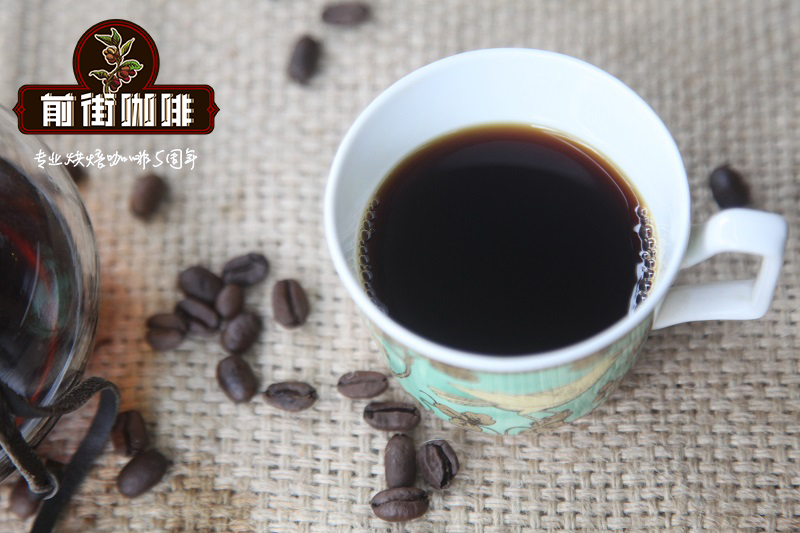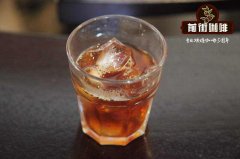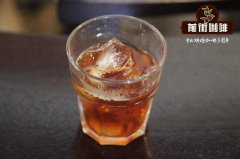Is the flavor of honey treated coffee good? How does honey handle coffee come from? Honey-treated coffee beans

Professional coffee knowledge exchange more coffee bean information please follow the coffee workshop (Wechat official account cafe_style)
The emergence of honey treatment can be said to be the response of the processing farm to the demand for fine coffee. The technology to control the residual pulp and the degree of fermentation is to determine the balance between the sweetness and fermented taste of the coffee in the cup. Sun-dried beans scare many new friends, it is that strange fermented taste, a taste that has never been tasted in commercial coffee. The emergence of boutique coffee allows us to find our favorite in cleanliness and complexity according to our own taste.
Honey treatment can be said to be the product of the third wave of coffee. When people are willing to spend money on high-quality coffee beans, processing plants are also willing to invest in equipment to develop better flavor treatment methods. In the process of fermentation, precisely control the proportion of preserved peel and pulp, the result is that we can buy white honey, yellow honey, red honey to black honey coffee.
Let's take a look at the differences:
White honey is the closest to washed beans, because only ~ 20% of the pulp is retained to ferment. So the flavor we often use in washing is "clean" to describe it. Our November Chavarria belongs to Bai Mi.
The next level is yellow honey, which retains ~ 40% flesh, with more pulp, and the complexity is slightly increased. I think this is the best series to represent the honey treatment. (today's Don Luis belongs to Huangmi. )
Furthermore, the retention of ~ 60% of the pulp is called red honey, and the bean sample is obviously like a pale sun.
In the end, if you don't cross the line to call the sun, you can imagine the complexity of the flavor, that is, a 20% discount on the sun, or a strong smell of the sun! (of course, it's just a simplified metaphor, so don't take it too seriously.)
So what does honey treatment mean to you?
Bean baker: the key to honey treatment is to keep the consistency of taste and flavor.
The challenge that bean bakers often face is how to get the beans out of the formula, or to maintain a certain flavor as much as possible, even if most crops cannot be preserved for more than a season. This means that it is necessary to understand not only honey treatment, but also other treatments in order to be helpful for mixed beans. You can swap beans more accurately, create new recipes, and narrow the flavor options you fill when replacing beans.
However, it is still based on the region, treatment, planting altitude and other conditions, there are many different variables to affect and change the final coffee, do not buy it blindly just because it is honey-treated coffee, it may have a great sweet, sour and fruity finish, but it is not always the same.
Yellow honey, red honey, black honey treatment, where is the difference?
When you want to buy honey-treated coffee, you usually have the choice of yellow honey, red honey and black honey. You may have heard of these honey treatments to retain the percentage of pectin layer, and what does this mean?
Coffee farmers will classify coffee, some will retain less pectin layer so that they can be exposed faster, while others will retain more pectin layer and require longer exposure time. Yellow honey (about 25% of the pectin layer) in order to finish faster during exposure, it must be carried out in the least shaded environment (clouds, shade trees) to get a yellow appearance. Red honey (which retains about 50% of the pectin layer) takes longer and needs some shelter to expose itself. Black honey (which retains about 100% of the pectin layer) is usually covered in order to extend the exposure time.
END
Important Notice :
前街咖啡 FrontStreet Coffee has moved to new addredd:
FrontStreet Coffee Address: 315,Donghua East Road,GuangZhou
Tel:020 38364473
- Prev

Raisin treatment what are the different coffee raisin treatments?
Professional coffee knowledge exchange more coffee bean information Please pay attention to the coffee workshop (Wechat official account cafe_style) Costa Rica has a mild climate, rainy mountains and fertile soil formed by volcanoes, which makes Costa Rica the most suitable environment for coffee growth. In addition to the superior growth environment, the Costa Rican government also had the foresight to start at the beginning of the 19th century.
- Next

What is Gucci's single-layer slow-drying coffee treatment? Single-layer slow-drying coffee flavor
For more information on coffee beans, please pay attention to the aromas of jasmine and violets in the coffee workshop (Wechat official account cafe_style), the acid value of plums, the sweetness of cantaloupe, the smooth taste and the taste of honey. Single layer slow drying Ancient Book [Blueberry Wine 2] Bensa the growing popularity of anaerobic treatment of sun-dried beans can add a lot of flavor to coffee beans. But
Related
- What is the meaning of lactic acid fermentation with coffee bean treatment?
- How to judge the state of foam by sound?
- How does the latte pull out the unicorn pattern? Come to get for a little trick to improve the flower pull!
- Will flower pulling affect the taste of the latte?
- Do you know the history of coffee?
- The difference between honey treatment and sun washing what is raisin honey treatment?
- What kind of milk can a novice use to make coffee foam to keep the foam longer? The correct method and skills of milking tutorial sharing
- Why do washed coffee beans taste sour? Flavor characteristics of washed Coffee
- Introduction to the skill of how to practice the size and height of water injection around the circle of hand-brewed coffee
- How do beginners practice coffee flower drawing from scratch?

